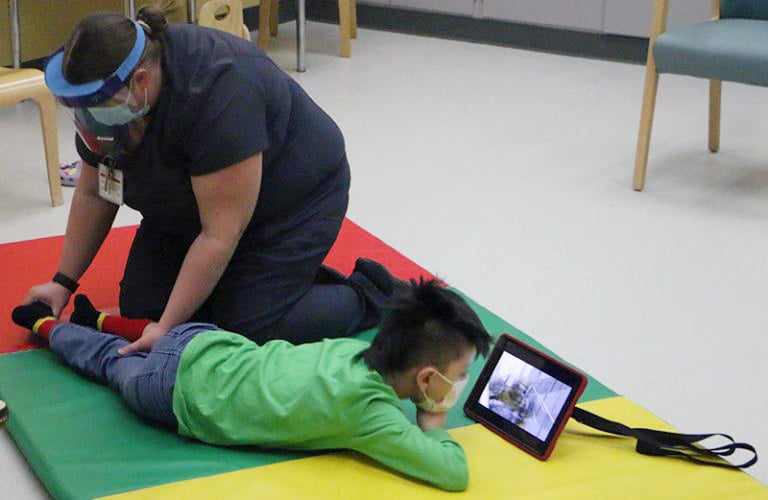AUCD's Network of Intellectual and Developmental Disability Research Centers (IDDRCs) consists of 15 Centers. Fifteen Centers currently receive funding from the Eunice Kennedy Shriver National Institute for Child Health and Human Development (NICHD). IDDRCs contribute to the development and implementation of evidence-based practices by evaluating the effectiveness of biological, biochemical, and behavioral interventions; developing assistive technologies; and advancing prenatal diagnosis and newborn screening.
By Emily Leclerc | Waisman Science Writer
Research from the Pediatric Neuromodulation Lab of Bernadette Gillick, PhD, MSPT, PT, at the Waisman Center showcases that evidence-based assessments for cerebral palsy (CP) are helping to improve diagnostic timelines and access to therapies and interventions. These assessment pathways, recommended by clinical guidelines published in 2017, were intended to help facilitate earlier CP diagnoses. Gillick, a Waisman investigator and professor of pediatrics, investigated the implementation of new assessment protocols implemented in 2017 to evaluate their impact on how early an at-risk child was diagnosed with cerebral palsy and how that affected the family’s access to interventions. “The importance of developing pathways to identify children at high-risk for CP cannot be understated, early detection leads to early intervention and the promise of improved lifelong outcomes,” says Gillick.
CP is the leading cause of childhood disabilities in the United States. It is a varied neurological condition that affects body movement and muscle coordination. CP is a secondary diagnosis associated with either a brain injury or other atypical brain development in early infancy. Early identification and diagnosis of the condition is important as it allows for earlier access to resources and supports such as treatments, therapies, equipment, and financial support.
“When physicians are able to provide an early CP diagnosis, this may help give families an understanding of what supports might be needed for their child, get access to more cerebral palsy-specific information, and understand how their child may benefit from certain therapies and early interventions,” says Ellen Sutter, PT, DPT, PhD, lead author on the related recent study publication and former graduate student in Gillick’s lab. She is now a postdoctoral researcher at Boston University.
Early diagnosis has also been associated with better long-term health outcomes in individuals with CP. The paper, Evidence-Based Infant Assessment for Cerebral Palsy: Diagnosis Timelines and Intervention Access in a Newborn Follow-up Setting, which was published in the Journal of Child Neurology, reviews data from the Waisman Center’s Newborn Follow Up Clinic from 2010 to 2022 to determine if the implementation of the new assessment protocols starting in 2017 improved diagnostic timelines and access to interventions. Key assessments included magnetic resonance imaging (MRI), the General Movements Assessment which evaluates an infant’s spontaneous movements, and the Hammersmith Infant Neurological Examination, which is a standardized neurologic assessment.
“In general, when children received more of these evidence-based assessments, they tended to receive earlier diagnoses and families were told about the likelihood of cerebral palsy earlier. This paper provides additional evidence that these assessments are helping to support providers in making earlier diagnoses,” Sutter says. This study helps to add more evidence that this series of assessments for CP are effective and worthwhile. This then, in turn, encourages clinics and clinicians to access the training required to appropriately deliver the assessments. The assessments included in the paper can have costly training from both a time and resource perspective. But with the understanding that they are capable of providing accurate and earlier CP diagnoses, it shows clinicians that the training is worth the investment in time and resources as the assessments can directly benefit patients and improve long-term outcomes.
There is still work to be done but Gillick and Sutter hope that this work will help pave the way for improved diagnostic journeys of individuals with CP and streamlined access to interventions and resources.
View Original Article











